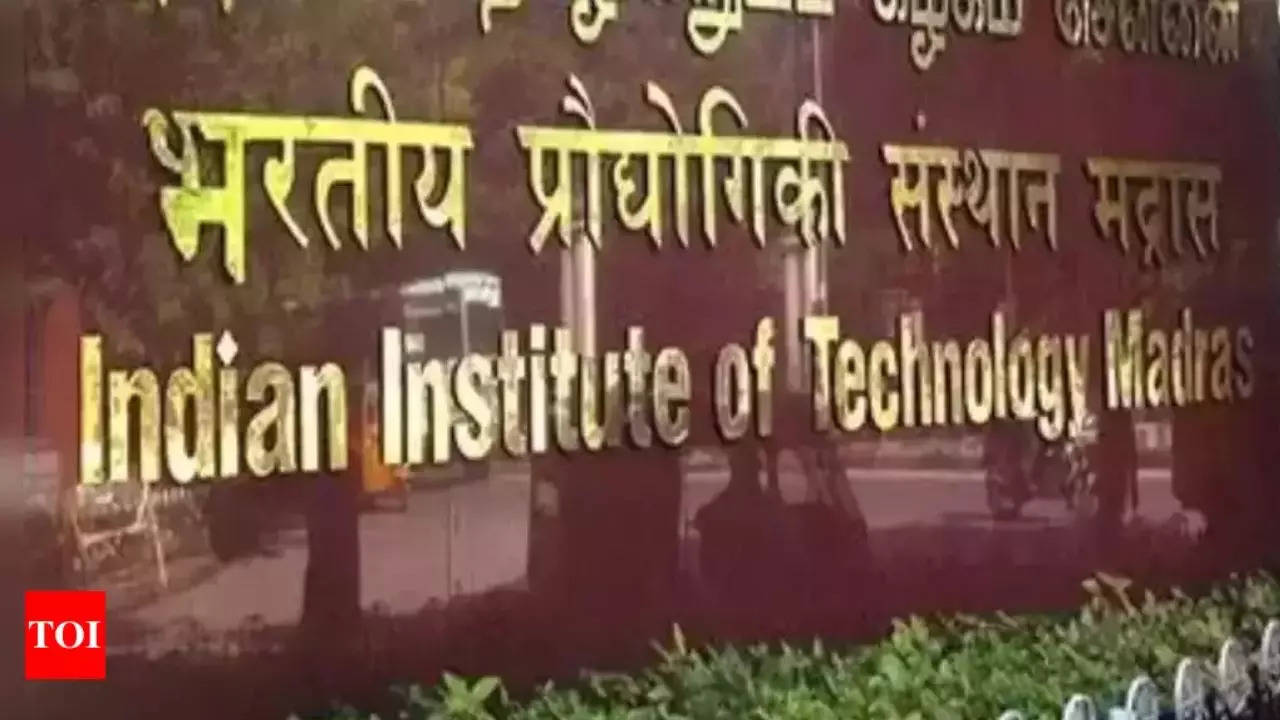CHENNAI: Indian scientists have developed an indigenous AI model that accurately estimates fetal age, thereby reducing risk of maternal and infant mortalities in the country.
The model, Garbhini-GA2, came out of an IIT Madras study (published in Lancet Regional Health Southeast Asia) which found inaccuracies in formulas of ultrasound machines leading to wrong assessment of preterm babies, affecting maternal and neonatal care.
The dating model developed by an IIT-M team with Translational Health Science and Technology Institute (THSTI), Faridabad, for the second and third trimesters of pregnancy applied several biometric predictors measured in pregnant women at Gurugram Civil Hospital in Haryana. Later, the data was sent for external verification to Christian Medical College, Vellore.
“In both internal and external analysis Garbhini-GA2 accurately estimated the age of a fetus, reducing error by almost three times,” said THSTI distinguished professor Shinjini Bhatnagar, who is one of the principal investigators. “This model will help gynecologists triage high risk women early, and improve the care delivered by obstetricians and neonatologists, thus reducing maternal and infant mortality rates in India,” she said.
In India, the preterm birth rate was 13 (per 1,000 live births) in 2020 and 2021. A preterm birth is defined as a baby who is born before the 37th week of gestation, compared to the normal term of 40 weeks.
Accurate pregnancy dating is crucial for providing appropriate antenatal care and determining the delivery date. Doctors in India make initial calculations based on the last menstrual period and refine them during the ultrasound scans done during the first few weeks of pregnancy.
‘Foreign formulas underestimate dates for many Indians’
IIT-M department of biotechnology associate professor Himanshu Sinha, who is the principal investigator for the study, said the calculations are made in the first trimester using crown-rump length (length from crown to feet) based on inbuilt programmes such as Hadlock formula derived using data from the Caucasian population. “It is considered the gold standard in medicine,” he said. However, nearly 30% of pregnant women come for the first scan only after the first trimester. “That’s when the challenge begins.”
Genetics, nutritional health of mothers, diabetes, hypertension and access to medical care impact fetal growth during the second and third trimesters, and a wrong calculation can be harmful. “These (foreign) formulas generally underestimate the dates for many Indian women. We found dating based on fetal biometry in the second and third trimesters is more susceptible to inaccuracies,” he said. The two existing in-built formulas in ultrasound machines, called Intergrowth-21st and Hadlock, overestimated preterm birth rates by 22.5% and 58.9%. “In the study sample, our estimate of preterm birth was around 10.5% while the Hadlock formula put it at 25%. Ours was closest to first trimester scans, which showed 9%,” Sinha said.
The project, an initiative of the department of biotechnology, was aimed at finding out why preterm birth rates in India were so high. Data and clinical scientists were brought together to analyse causes. The study will be validated in prospective pan-India cohorts before it is deployed in clinics, DBT secretary Rajesh Gokhale said.
The model, Garbhini-GA2, came out of an IIT Madras study (published in Lancet Regional Health Southeast Asia) which found inaccuracies in formulas of ultrasound machines leading to wrong assessment of preterm babies, affecting maternal and neonatal care.
The dating model developed by an IIT-M team with Translational Health Science and Technology Institute (THSTI), Faridabad, for the second and third trimesters of pregnancy applied several biometric predictors measured in pregnant women at Gurugram Civil Hospital in Haryana. Later, the data was sent for external verification to Christian Medical College, Vellore.
“In both internal and external analysis Garbhini-GA2 accurately estimated the age of a fetus, reducing error by almost three times,” said THSTI distinguished professor Shinjini Bhatnagar, who is one of the principal investigators. “This model will help gynecologists triage high risk women early, and improve the care delivered by obstetricians and neonatologists, thus reducing maternal and infant mortality rates in India,” she said.
In India, the preterm birth rate was 13 (per 1,000 live births) in 2020 and 2021. A preterm birth is defined as a baby who is born before the 37th week of gestation, compared to the normal term of 40 weeks.
Accurate pregnancy dating is crucial for providing appropriate antenatal care and determining the delivery date. Doctors in India make initial calculations based on the last menstrual period and refine them during the ultrasound scans done during the first few weeks of pregnancy.
‘Foreign formulas underestimate dates for many Indians’
IIT-M department of biotechnology associate professor Himanshu Sinha, who is the principal investigator for the study, said the calculations are made in the first trimester using crown-rump length (length from crown to feet) based on inbuilt programmes such as Hadlock formula derived using data from the Caucasian population. “It is considered the gold standard in medicine,” he said. However, nearly 30% of pregnant women come for the first scan only after the first trimester. “That’s when the challenge begins.”
Genetics, nutritional health of mothers, diabetes, hypertension and access to medical care impact fetal growth during the second and third trimesters, and a wrong calculation can be harmful. “These (foreign) formulas generally underestimate the dates for many Indian women. We found dating based on fetal biometry in the second and third trimesters is more susceptible to inaccuracies,” he said. The two existing in-built formulas in ultrasound machines, called Intergrowth-21st and Hadlock, overestimated preterm birth rates by 22.5% and 58.9%. “In the study sample, our estimate of preterm birth was around 10.5% while the Hadlock formula put it at 25%. Ours was closest to first trimester scans, which showed 9%,” Sinha said.
The project, an initiative of the department of biotechnology, was aimed at finding out why preterm birth rates in India were so high. Data and clinical scientists were brought together to analyse causes. The study will be validated in prospective pan-India cohorts before it is deployed in clinics, DBT secretary Rajesh Gokhale said.
